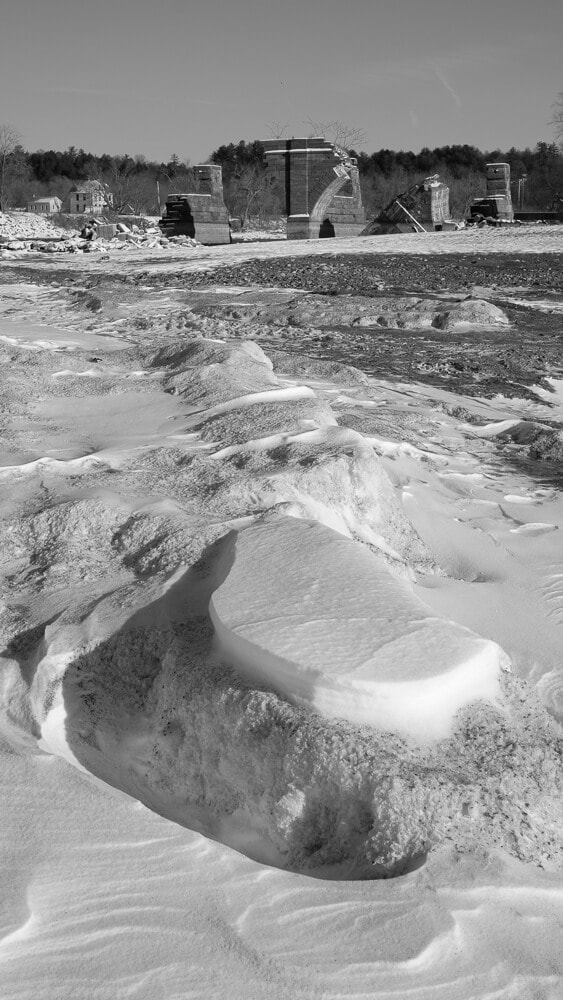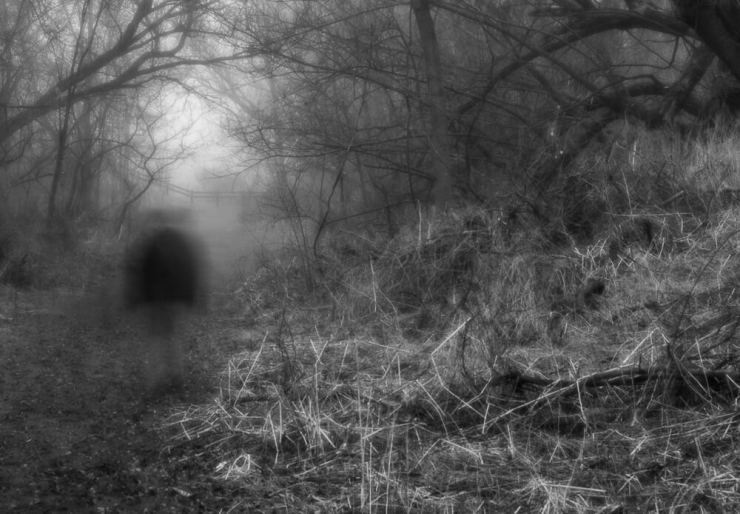Schoharie Creek Aqueduct

The original Erie Canal was begun on July 4, 1817 and completed in 1825. The section that went through Fort Hunter was completed in 1823. In the early years the boats were pulled across the slack, pooling waters of Schoharie Creek. It was slow and dangerous work. In the 1830’s commerce travel had increased to the point that an expansion of the canal was needed. Construction of an aqueduct over Schoharie Creek began in 1838 and was completed in 1841. It carried boats, mules and horses safely across Schoharie Creek until 1916. The Army Corp of Engineers demolished the eastern arches in the 1940s to alleviate ice jams. Two more arches collapsed in later years, one in 1977 and the last in 1998.

Dennis Stierer introduced me to this section of the canal one spring while we planned that year’s Erie Canal workshop. I immediately fell in love with the aqueduct, feeling I’d discovered long lost ruins.

During the summer Schoharie Creek fills the basin and the base of the arches are under water. In the winter and early spring, when the canal is closed, the water is much lower and you can walk out among the arches. It is my favorite place along the Erie Canal to photograph.

This year’s Photographers’s Retreat is in Johnstown, near Schoharie Crossing State Park. Hopefully, the water will be low, and I can walk among the ruins of Schoharie Creek Aqueduct.
Hope to see you there.
tillman